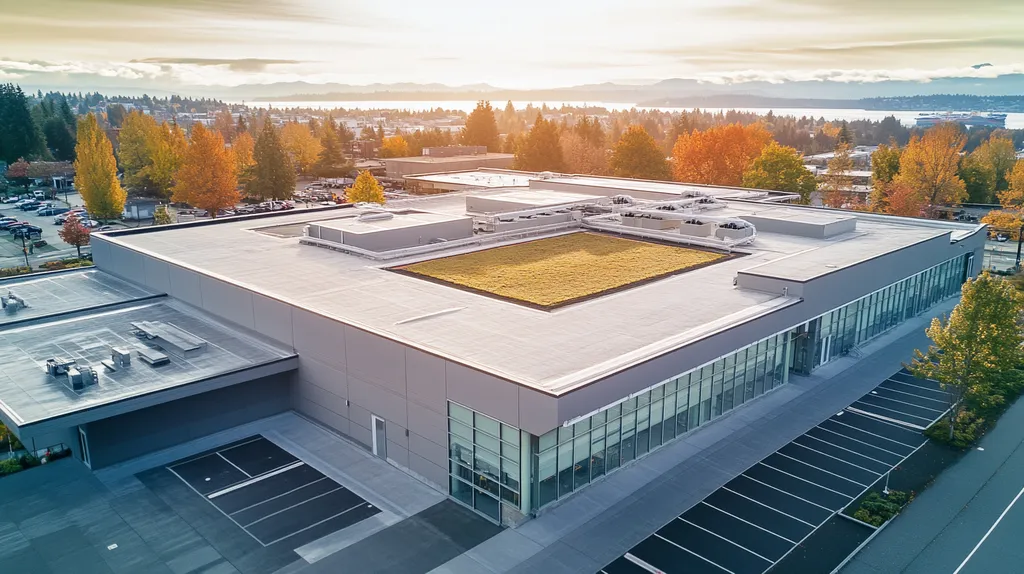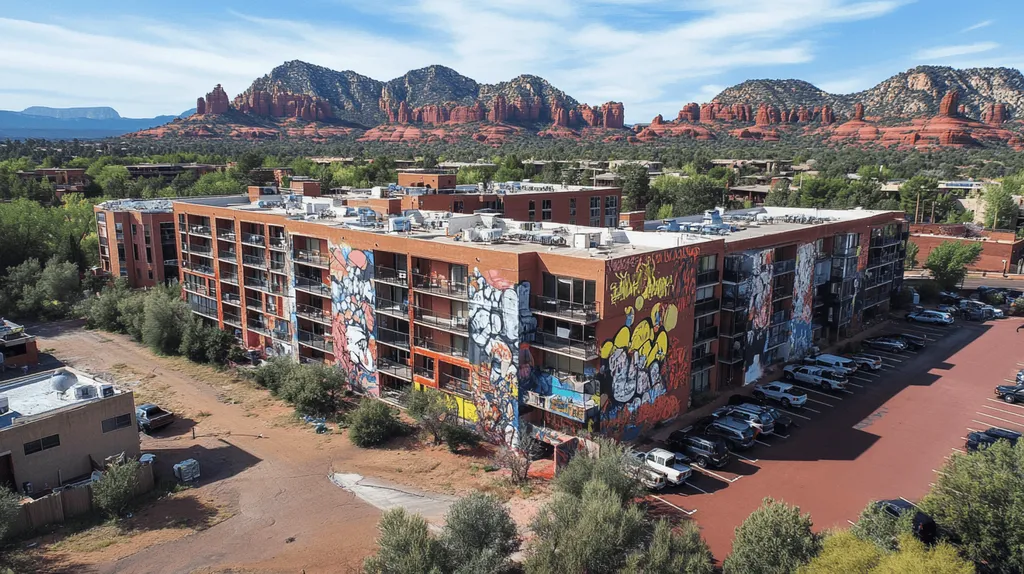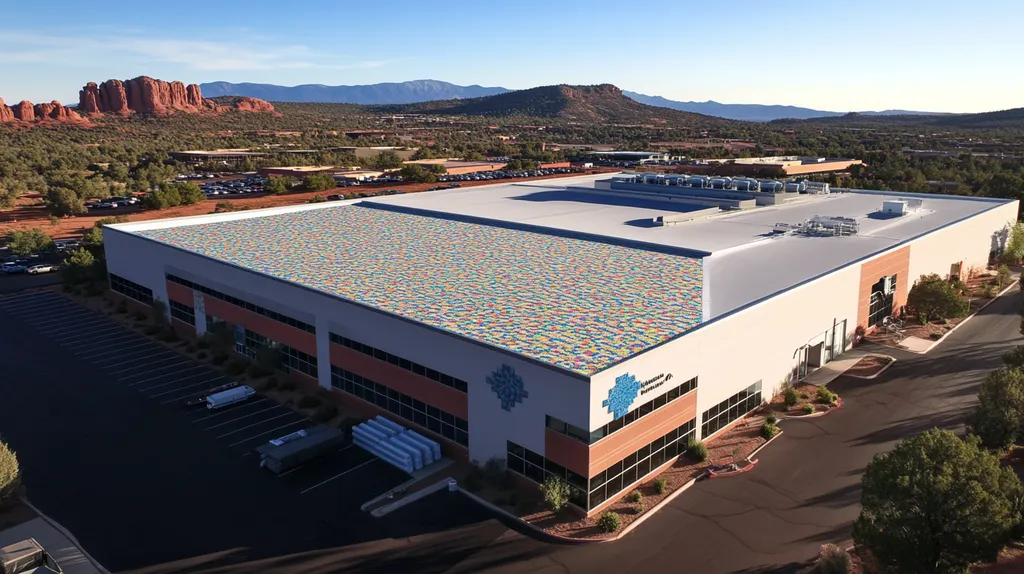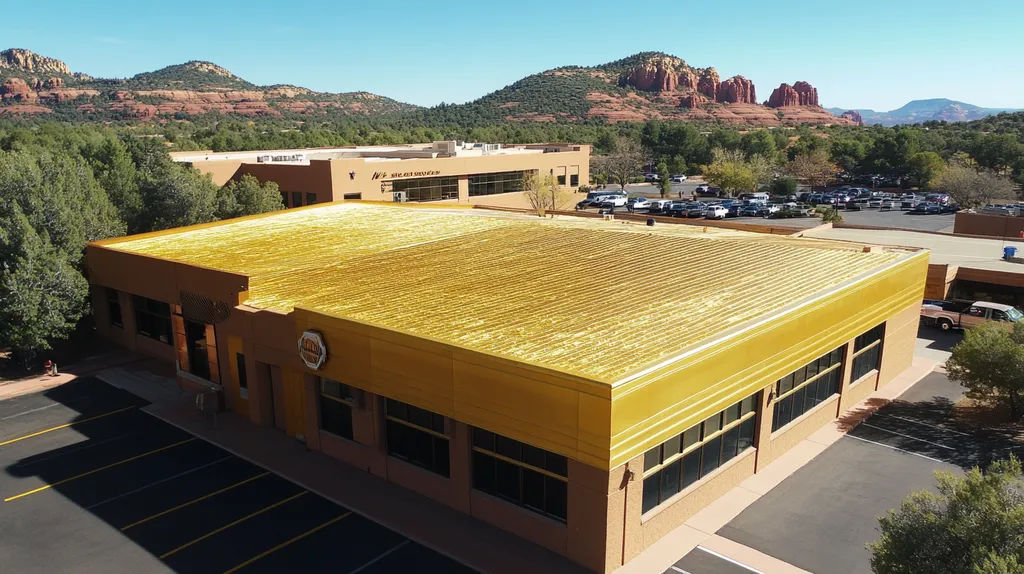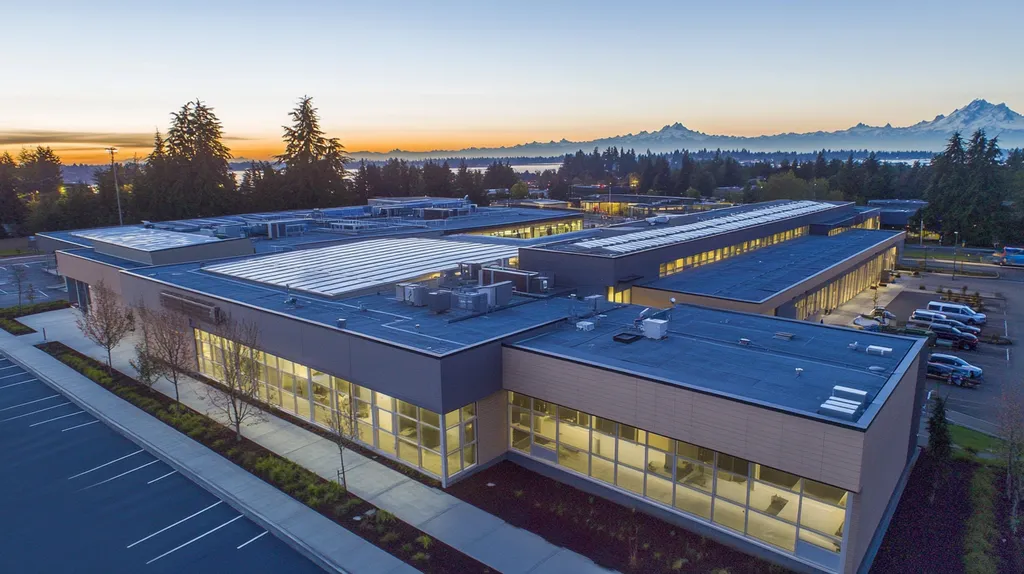Commercial property owners gamble millions of dollars on roofing contractors whose “extensive experience” often consists of patching suburban strip malls and watching installation videos on YouTube.
This verification shortcut costs the industry billions annually in premature failures, emergency repairs, and voided warranties that could have been prevented with systematic contractor vetting.
While facility managers religiously verify elevator maintenance credentials and security service qualifications, many skip thorough roofing contractor evaluation—the professionals responsible for protecting their most valuable assets from water damage disasters.
Understanding how to verify commercial roofing expertise separates successful facility management from expensive lessons in why experience requirements exist in the first place.
SECTION 1: THE BASICS EXPLAINED
Nearly 40% of commercial roof failures trace back to one preventable mistake: hiring contractors without proven expertise. While property management companies religiously verify everything from elevator maintenance to security services, many skip thorough vetting for roofing contractors—the very professionals responsible for protecting million-dollar buildings.
This gamble costs the commercial real estate industry billions annually in premature failures, emergency repairs, and voided warranties. Understanding contractor experience verification isn’t just due diligence—it’s financial survival in an industry where every tech startup thinks they’ve revolutionized roofing by adding a smartphone app to basic installation work.
What It Is (In Plain Language)
Contractor experience verification means proving your roofing team has successfully handled commercial projects similar to yours—not just any roofing work. It’s the difference between hiring someone who patches residential shingles and someone who understands the complexities of 50,000-square-foot TPO installations.
Commercial roofing demands expertise with specialized materials like EPDM, modified bitumen, and metal systems. Each requires different installation techniques, seaming methods, and weather considerations. A contractor might boast 20 years of experience, but if that’s all residential work, they’re essentially rookies on your commercial project.
True verification digs into project portfolios, manufacturer certifications, and client references specific to commercial applications. It separates contractors who understand building codes, structural load requirements, and complex drainage systems from those who simply own a ladder and optimism.
The process goes beyond checking if they’re licensed and insured—basic requirements that any legitimate contractor should meet. Real verification examines their track record with projects matching your building type, roof size, and material specifications.
Why It Matters (To Your Building)
Commercial roofs protect assets worth millions, making contractor selection a high-stakes decision. An inexperienced team can create installation errors that remain hidden for months—poor membrane sealing, inadequate insulation attachment, or improper flashing details that invite water intrusion.
These mistakes surface as costly surprises: emergency leak repairs during business operations, mold remediation, or complete roof replacement years ahead of schedule. What seemed like savings on contractor selection becomes exponentially more expensive when fixing the aftermath.
Manufacturer warranties typically require installation by certified professionals. Skip proper verification, and you might void warranty coverage worth tens of thousands in potential claims. Insurance companies also scrutinize contractor qualifications when processing weather-related damage claims.
Energy efficiency represents another critical factor. Inexperienced contractors often compromise insulation continuity or create thermal bridges that spike heating and cooling costs. Proper installation by verified experts maintains the building envelope’s performance throughout the roof’s lifespan.
The ripple effects extend beyond immediate costs—tenant complaints, business interruptions, and facility management headaches that consume valuable time and resources.
How It Works
Start by demanding detailed project portfolios showing completed commercial work. Request specifics: building types, square footage, materials used, and completion dates. Generic project lists or residential-heavy portfolios raise immediate red flags about commercial expertise.
Verify manufacturer certifications for your chosen roofing system. GAF, Firestone, Carlisle, and other major manufacturers maintain databases of certified contractors. These certifications require training, testing, and ongoing education—not just paying a fee.
Contact references from recent commercial projects, focusing on similar building types and roof sizes. Ask specific questions about project timeline, weather delays, cleanup procedures, and any post-installation issues. Generic positive reviews mean little without project details.
Review insurance coverage and bonding capacity appropriate for your project size. A contractor adequate for small repairs might lack the financial backing for major installations. Verify coverage amounts match your project value and potential liability exposure.
Finally, evaluate their technical proposal quality. Experienced contractors provide detailed installation sequences, material specifications, and contingency planning. Vague proposals or cookie-cutter approaches suggest limited commercial expertise regardless of their marketing claims.
SECTION 2: PRACTICAL APPLICATIONS
With commercial roof replacements averaging $7-15 per square foot and facility downtime costing thousands daily, contractor selection mistakes become expensive lessons in physics—gravity always wins, and water always finds the weakest link. Every roofing project presents specific challenges that separate experienced commercial contractors from residential roofers cosplaying as industrial experts.
Understanding where contractor expertise matters most helps facility managers avoid the costly discovery that their “experienced” team learned commercial roofing techniques on their building. This section examines real-world applications where verified expertise protects both budgets and business operations.
Common Uses & Examples
Manufacturing facilities demand contractors who understand chemical exposure, thermal expansion, and heavy equipment loads that would crush typical retail installations. A contractor experienced with automotive plants knows that metal roof systems need expansion joints every 200 feet, while inexperienced teams create buckling disasters by treating them like oversized house roofs.
Hospital and data center projects require contractors familiar with critical facility protocols—no surprise power outages or contamination risks during installation. These contractors coordinate with facility operations to maintain sterile environments and backup power systems, skills that residential roofers never develop.
Retail centers with multiple tenant spaces need contractors who can work around business operations without disrupting sales. Experienced commercial contractors schedule work in phases, use noise reduction techniques, and manage debris to keep stores operational—capabilities that separate professionals from contractors who think “customer service” means cleaning up most of their mess.
Cold storage facilities and food processing plants present unique challenges with temperature differentials and sanitation requirements. Contractors must understand vapor barriers, condensation control, and FDA-compliant materials—expertise that comes only from verified commercial experience.
When You Need It Most
Emergency storm damage separates experienced contractors from opportunistic disaster chasers who descend like locusts after severe weather. Qualified contractors can quickly assess structural damage, implement temporary waterproofing, and coordinate with insurance adjusters without compromising future repairs.
Roof replacement projects over occupied spaces demand contractors who understand staging, containment, and business continuity. Many states require 4+ years of verified journeyman-level experience for contractor licensing, ensuring practical knowledge of installation and safety procedures (source: SuretyNow).
Integration of solar arrays, green roofing, or rooftop equipment requires contractors experienced with structural loading calculations and waterproofing around complex penetrations. These installations create permanent leak risks if handled by contractors who treat them like simple add-ons to basic roof work.
Warranty claims and manufacturer inspections expose contractor inexperience when installation defects void coverage. Experienced contractors document their work, follow manufacturer specifications precisely, and maintain relationships with technical representatives who can verify compliance.
Interactions With Other Systems
HVAC installations create the most common leak points on commercial roofs, requiring contractors who coordinate with mechanical trades to maintain membrane integrity. Inexperienced roofers often treat penetrations as someone else’s problem, creating gaps in responsibility that become gaps in waterproofing.
Electrical systems for lighting, communications, and equipment need contractors who understand conduit routing and junction box flashing without compromising roof warranties. This coordination requires commercial experience that residential contractors simply don’t possess.
Structural engineers rely on experienced contractors to identify load-bearing concerns and deflection issues during installation. A contractor who understands building codes can catch structural problems before they become catastrophic failures—knowledge that comes from years of commercial project experience.
Fire suppression systems, elevator equipment, and telecommunications installations all create roof penetrations that require specialized sealing techniques. Experienced commercial contractors maintain relationships with these trades and understand sequencing requirements that keep projects on schedule while maintaining waterproof integrity.
SECTION 3: KEY TERMINOLOGY DECODED
Commercial roofing terminology isn’t just insider jargon—it’s the language that separates legitimate contractors from smooth-talking amateurs who learned their vocabulary from YouTube videos. When contractors throw around terms like “modified bitumen ballasted systems” or “mechanically-fastened single-ply membranes,” they’re either demonstrating genuine expertise or hoping you won’t ask follow-up questions.
Understanding these terms transforms property managers from passive listeners into informed evaluators who can spot contractor competence within the first five minutes of conversation. Every mispronounced technical term or vague definition reveals gaps in experience that could translate into expensive installation mistakes.
Essential Terms Explained
“Flashing” represents the unsung hero of commercial roofing—metal or membrane material that seals transitions, penetrations, and roof edges where most leaks originate. Experienced contractors discuss flashing details extensively because they understand that perfect membrane installation means nothing if flashing fails.
“Membrane” refers to the primary waterproof barrier in low-slope commercial applications. TPO, EPDM, PVC, and modified bitumen each require different installation techniques, seaming methods, and maintenance protocols that separate commercial specialists from generalist contractors.
“Substrate” describes what lies beneath the membrane—insulation, cover boards, or structural decking that affects installation methods and long-term performance. Contractors who skip substrate discussions often skip proper preparation procedures that ensure membrane longevity.
“Penetrations” encompass every hole through the roof system for HVAC equipment, plumbing vents, electrical conduits, and structural supports. Each penetration represents a potential leak point requiring specialized sealing techniques that inexperienced contractors often underestimate.
Industry Jargon Translated
“R-value” measures insulation’s thermal resistance—higher numbers mean better energy performance and lower utility costs. Contractors who confuse R-value with thickness or can’t explain its relationship to building codes reveal fundamental knowledge gaps about energy efficiency requirements.
“Ponding water” describes standing water that remains on flat roofs more than 48 hours after rainfall. This condition accelerates membrane deterioration and indicates drainage deficiencies that qualified contractors must identify and correct during installation planning.
“Field-applied” versus “shop-applied” distinguishes between on-site installation work and factory-controlled manufacturing processes. Experienced contractors explain these differences because they affect quality control, weather sensitivity, and project scheduling requirements.
Evaluating past projects and workmanship helps verify that contractors understand quality materials, safety standards, and client satisfaction rather than just memorizing terminology from manufacturer brochures (source: PRS Roof Pro).
Measurement & Units Simplified
“Squares” remain the standard roofing measurement unit—one square equals 100 square feet of roof area. Contractors who quote linear feet for membrane work or use residential terminology like “bundles” immediately signal their lack of commercial experience.
“Mil thickness” describes membrane gauge in thousandths of an inch—45-mil TPO offers different durability than 60-mil systems. Knowledgeable contractors explain these trade-offs between cost, performance, and warranty coverage rather than simply recommending whatever’s cheapest.
“Wind uplift resistance” gets measured in pounds per square foot, indicating how much suction force the roof system can withstand. This specification directly relates to building height, geographic location, and structural requirements that experienced contractors factor into their material recommendations.
“Slope” calculations determine drainage effectiveness, typically expressed as inches per foot or percentages. Commercial contractors must understand minimum slopes for different membrane types and how to achieve proper drainage without compromising structural integrity or installation procedures.
SECTION 4: DECISION FACTORS
Commercial roofing decisions worth hundreds of thousands of dollars get reduced to spreadsheet line items, as if waterproofing a 100,000-square-foot manufacturing facility resembles buying office supplies. This procurement mentality ignores the reality that contractor selection involves complex trade-offs between cost, performance, and longevity—each factor capable of making or breaking project success.
The lowest bidder might seem like financial genius until emergency repairs shut down operations two years early. Meanwhile, the most expensive contractor could deliver premium materials with amateur installation that voids warranties and creates liability nightmares.
Smart facility managers evaluate these decision factors as interconnected variables, not isolated budget categories that survive independent optimization.
Cost Considerations
Budget constraints drive contractor selection, but the cheapest bid often represents the most expensive mistake in commercial roofing. Low bidders frequently cut corners on materials, skip proper substrate preparation, or underestimate labor requirements—creating cost overruns that eclipse initial savings.
Experienced commercial contractors price projects to include proper flashing details, adequate insulation attachment, and manufacturer-compliant installation procedures. These specifications cost more upfront but prevent the emergency repairs and premature replacements that destroy facility budgets.
Hidden costs multiply when inexperienced contractors void manufacturer warranties through improper installation. A $50,000 roof replacement becomes a $200,000 disaster when warranty coverage disappears and weather damage strikes unprotected membranes.
Smart cost analysis includes total ownership expenses over the roof’s expected lifespan. Contractors who can provide 2-3 quality references demonstrate the track record needed to substantiate their claims about long-term value (source: American Weather Star).
Labor costs reflect skill levels that directly impact installation quality. Certified commercial roofers command higher wages because they understand complex details that prevent costly failures—expertise that pays dividends when severe weather tests their workmanship.
Performance Trade-offs
Commercial roofs must balance competing performance requirements that inexperienced contractors often misunderstand. Energy efficiency demands conflict with cost constraints, while weather resistance requirements may compromise installation speed during tight project schedules.
Cool roofing systems that reduce energy costs require precise installation techniques that generic contractors frequently botch. Reflective membranes need specific adhesion methods and seaming procedures that differ from standard applications—knowledge gaps that eliminate anticipated utility savings.
Wind uplift resistance becomes critical for high-rise buildings and severe weather zones, but achieving proper ratings requires fastening patterns and attachment methods that increase material and labor costs. Inexperienced contractors often underestimate these requirements until inspection failures force expensive corrections.
Drainage performance affects every other roof characteristic, yet contractors without commercial expertise routinely ignore slope requirements and ponding water issues. Perfect membrane installation means nothing when standing water accelerates deterioration and creates structural loading problems.
Fire resistance, chemical compatibility, and foot traffic durability represent additional performance factors that vary by building type and operational requirements—complexities that separate commercial specialists from residential roofers attempting commercial projects.
Lifespan & Durability Factors
Roof lifespan depends more on installation quality than material selection, making contractor expertise the primary durability factor. Premium membranes installed by inexperienced teams routinely fail before budget materials properly installed by commercial specialists.
Substrate preparation determines long-term membrane performance, but this invisible work gets skipped by contractors focused on surface appearances. Inadequate primer application, contaminated surfaces, or insufficient drying time create adhesion failures that appear months after project completion.
Flashing details represent the most critical durability factor because 90% of roof leaks originate at transitions, penetrations, and edges where membranes meet other building components. Experienced contractors spend extensive time on flashing because they understand these details determine overall roof longevity.
Maintenance requirements vary dramatically based on installation quality and material selection. Properly installed commercial roofs need minimal intervention for decades, while poor installations require constant attention and emergency repairs that consume maintenance budgets.
Environmental factors like UV exposure, thermal cycling, and chemical exposure affect different roofing materials uniquely. Contractors experienced with specific building types understand these relationships and select appropriate materials rather than defaulting to whatever generates the highest profit margins.
SECTION 5: COMMON CHALLENGES
Commercial roofing projects fail at alarming rates—not from acts of God or material defects, but from entirely preventable contractor selection mistakes that facility managers repeat with depressing regularity. The same industry that demands ISO certifications for janitorial services somehow accepts handshake agreements with roofers whose “commercial experience” consists of patching a strip mall in 2019.
These verification shortcuts create predictable disasters that unfold months after ribbon-cutting ceremonies, when mysterious leaks appear during the first major storm. Understanding common pitfalls, recognizing danger signals, and implementing systematic prevention measures separates successful facility managers from those explaining water damage to increasingly skeptical executives.
Frequent Problems & Solutions
Membrane installation failures dominate commercial roofing disasters, typically manifesting as premature seam separations, improper adhesion, or flashing details that channel water directly into building interiors. Inexperienced contractors treat complex membrane systems like oversized residential materials, ignoring manufacturer specifications that require specialized tools and techniques.
Substrate preparation represents another catastrophic failure point where corner-cutting contractors skip moisture testing, contamination removal, or proper primer application. These invisible shortcuts create adhesion failures that appear months later as bubbling, delamination, or complete membrane detachment during moderate wind events.
The solution demands rigorous documentation requirements during contractor selection. Require detailed installation procedures, manufacturer certifications, and photographic evidence from similar completed projects rather than accepting generic promises about “industry-standard practices.”
Project scheduling disasters multiply when inexperienced contractors underestimate weather dependencies, material lead times, or coordination requirements with other building trades. Smart solutions include requiring detailed critical path schedules with weather contingencies and verified relationships with material suppliers who can meet commercial delivery requirements.
Quality control failures occur when contractors lack systematic inspection procedures or documentation protocols that catch problems before they become expensive corrections. Experienced contractors provide inspection checklists, progress photographs, and manufacturer compliance documentation throughout installation rather than hoping nobody notices shortcuts.
Warning Signs To Watch For
Generic proposals immediately signal contractor inexperience—detailed commercial roofing specifications cannot be reduced to cookie-cutter templates that work across different building types, roof sizes, and environmental conditions. Legitimate contractors provide project-specific material selections, installation sequences, and performance criteria tailored to actual building requirements.
Reference evasion represents another critical warning sign when contractors provide vague contact information, refuse to discuss specific project details, or offer only glowing testimonials without verifiable project data. The Contractors State License Board requires 4 years of verified journeyman-level experience, documented through tax forms, pay stubs, and project records that legitimate contractors readily provide (source: CSLB).
Technical knowledge gaps surface quickly when contractors cannot explain material compatibility, installation tolerances, or manufacturer warranty requirements specific to proposed roofing systems. Experienced commercial contractors discuss these complexities extensively because they understand how technical details affect long-term performance.
Insurance and bonding inadequacies reveal contractors unprepared for commercial project risks—residential-level coverage cannot protect against commercial-scale liability exposure or project completion requirements. Legitimate commercial contractors maintain coverage levels appropriate for million-dollar building protection responsibilities.
Communication problems during initial discussions typically worsen under project pressure, creating coordination failures that delay schedules and compromise installation quality. Professional contractors respond promptly with specific answers rather than generic reassurances about their commitment to customer satisfaction.
Preventative Approaches
Systematic prequalification processes eliminate most contractor problems before they begin by establishing minimum experience requirements, financial capacity standards, and technical competency benchmarks that separate commercial specialists from opportunistic amateurs. Document these requirements clearly and apply them consistently to avoid desperate last-minute contractor searches.
Third-party verification through manufacturer databases, licensing boards, and bonding companies provides objective confirmation of contractor claims rather than relying on self-reported qualifications that may stretch truth beyond recognition. These verification steps cost nothing but prevent expensive discoveries about contractor limitations during active projects.
Progressive inspection protocols with qualified consultants identify installation problems while corrections remain feasible rather than discovering failures after project completion when warranty disputes and finger-pointing consume months of facility management attention. Build these inspection requirements into contracts with clear performance standards.
Comprehensive contract specifications that define materials, procedures, performance criteria, and documentation requirements eliminate ambiguity that inexperienced contractors exploit to justify substandard work. Experienced contractors appreciate detailed specifications because they clarify expectations and protect all parties from misunderstandings.
Ongoing education for facility management teams about commercial roofing standards, inspection techniques, and industry best practices improves contractor evaluation capabilities and reduces reliance on smooth-talking sales representatives who confuse marketing enthusiasm with technical competence.
SECTION 6: NEXT STEPS & RESOURCES
Armed with contractor horror stories and verification strategies, facility managers face the practical challenge of implementing systematic vetting processes before the next emergency leak transforms their office into an indoor swimming pool. The commercial roofing industry thrives on rushed decisions made during crisis moments—when water drips through conference room ceilings and desperate property managers accept the first contractor who answers their phone.
Breaking this cycle requires establishing verification protocols, accessing authoritative resources, and building knowledge that transforms reactive facility management into strategic asset protection. These next steps separate prepared professionals from those learning expensive lessons about why contractor credentials matter during their next weather-related disaster.
Questions To Ask Providers
Start with project portfolio specifics that separate commercial veterans from residential roofers attempting industrial cosplay. Demand exact square footage figures, building types, and completion dates for their five largest commercial projects within the past three years—generic project lists or evasive responses immediately disqualify contractors from serious consideration.
Drill into manufacturer certification details beyond just claiming “we’re certified with everyone.” Ask for specific certification numbers, training completion dates, and technical representative contacts who can verify their standing. Legitimate contractors provide this information instantly because they understand its importance for warranty compliance.
Investigate their emergency response capabilities and repair experience, not just new installation work. Ask how they handle leak investigations, temporary waterproofing, and coordination with insurance adjusters during storm damage situations—expertise that reveals their depth of commercial experience.
Question their substrate preparation procedures and quality control documentation methods. Contractors who can’t explain moisture testing protocols, primer application techniques, or inspection procedures lack the technical knowledge needed for successful commercial installations.
Industry Standards & Guidelines
The National Roofing Contractors Association (NRCA) maintains comprehensive installation standards that separate legitimate commercial practices from improvised techniques that void warranties. These guidelines cover everything from substrate preparation to membrane seaming procedures—knowledge that qualified contractors reference frequently during technical discussions.
Manufacturer specification databases provide definitive installation requirements that eliminate contractor interpretation flexibility. GAF, Firestone, Carlisle, and other major manufacturers publish detailed technical bulletins that experienced contractors follow precisely to maintain warranty coverage.
Local building codes and energy efficiency standards create minimum performance requirements that vary by climate zone and building type. Contractors familiar with these regulations demonstrate the compliance knowledge necessary for successful commercial projects.
Using third-party qualification services like ISNetworld or Avetta can help manage risk by ensuring regulatory compliance and validating contractor qualifications and safety records through standardized evaluation processes (source: D. C. Taylor Co.).
Further Learning Simplified
Professional development for facility managers doesn’t require becoming roofing experts—just knowledgeable enough to recognize contractor competence and spot dangerous gaps in experience. Industry webinars and trade publications translate technical complexities into practical decision-making tools without overwhelming non-technical managers.
Building relationships with qualified roofing consultants provides ongoing expertise access for major projects without maintaining full-time technical staff. These consultants offer objective contractor evaluation, specification development, and construction oversight that protects facility investments.
Systematic documentation of contractor performance creates institutional knowledge that survives personnel changes and improves future selection decisions. Track project outcomes, warranty claims, and maintenance requirements to identify contractors who deliver long-term value versus those who create ongoing problems.
Regular facility assessments by qualified professionals identify potential problems before they become emergency repairs, reducing reliance on crisis-mode contractor selection that typically produces crisis-quality results requiring expensive corrections.
The Bottom Line
Commercial roof failures cost the industry billions annually, yet most disasters trace back to one preventable mistake: hiring contractors without verified commercial expertise.
While facility managers religiously verify elevator technicians and security services, they routinely gamble million-dollar buildings on roofers whose “extensive experience” consists of patching strip malls and watching installation videos.
The systematic verification process outlined here—demanding project portfolios, manufacturer certifications, and technical competency—separates legitimate commercial contractors from residential roofers attempting industrial cosplay.
Emergency contractor selection during crisis moments typically delivers emergency-quality results that require more emergencies to fix.
Implementing these verification protocols before water drips through conference room ceilings transforms reactive facility management into strategic asset protection that prevents expensive lessons in why experience requirements exist in the first place.
FREQUENTLY ASKED QUESTIONS
Q. Why is verifying commercial roof contractor experience crucial for my project?
A. Skipping thorough vetting of contractors leads to costly premature failures and emergency repairs. Verifying experience ensures your team understands complex commercial roofing materials, codes, and installation techniques—far beyond residential fixes. This protects your asset’s value, avoids voided warranties, and saves significant headaches down the line.
Q. How does contractor expertise affect industrial roof replacements and downtime?
A. Industrial roof projects demand precise coordination to avoid costly downtime and damage. Experienced contractors know how to manage building-specific challenges like chemical exposures, structural loads, and sensitive operations to prevent disruptions. Inexperienced teams treat these jobs as oversized home repairs, often causing expensive delays and failures.
Q. What commercial roof terminology should facility managers understand?
A. Knowing terms like flashing, membrane, substrate, and penetrations helps you gauge contractor credibility quickly. These aren’t just buzzwords but critical concepts tied to waterproofing and durability. Contractors tripping over the basics often gloss over vital installation details that lead to leaks and costly repairs.
Q. What key factors influence choosing a commercial roof contractor beyond just price?
A. Low bids can backfire by sacrificing quality, leading to expensive repairs and lost warranties. Evaluate contractors on long-term performance, installation quality, warranty adherence, and durability knowledge—not just upfront cost. Skillful crews prevent hidden failures that can cost your facility millions over time.
Q. What common challenges arise from hiring unverified commercial roof contractors?
A. Expect premature membrane failures, poor flashing seals, and botched substrate prep from poorly vetted contractors. These issues cause unpredictable leaks and costly emergency fixes. Recognize red flags like vague proposals, absent references, and insurance gaps to avoid becoming the next cautionary tale.
Q. What practical steps ensure thorough verification of commercial roof contractors?
A. Insist on detailed project portfolios with specs and dates for recent commercial work and manufacturer certification proof. Ask about emergency repair experience and substrate prep protocols. Use industry guidelines and third-party databases to independently verify credentials before signing anything.
Q. How do warranties and insurance impact commercial roofing contractor selection?
A. Proper warranty coverage hinges on certified installations—skipping verification risks voiding tens of thousands in claims. Insurance must match commercial project scale; residential-level protection won’t cut it. Contractors lacking this leave your facility exposed to financial and liability nightmares if storm damage strikes.

